The DualHead2Go: External Multi-Display Upgrade from Matrox.
by Josh Venning on November 25, 2005 6:00 AM EST- Posted in
- Displays
The DualHead2Go
The Cyclone EP1C chips used are what drive the capabilities of the DualHead2Go. As there are no custom Matrox ASICs on the board, we can conclude that the one or both of the FPGAs handle taking the output of the AD9888, splitting the image into two (or clone the image depending on the resolution and PowerDesk settings), and then sending the resulting data along to the Chrontel CH7301C-T display controllers. These devices also likely manage the rest of the board and use the DDC (Display Data Channel) to report the DualHead2Go's EDID (extended display identification data) to the display device.
The CH7301C is a single link DVI transmitter, which supports analog output over three 10-bit DACs for analog RGB displays. This suggests that a digital version of the DualHead2Go wouldn't be that difficult to implement. This part of the design could also be reused if Matrox were to develop a version of the DualHead2Go that supports up to 3200x1200 (or two 1600x1200 displays). Of course, a device such as this would require a dual-link DVI input and a beefier digitizer than the AD9888. The FPGAs may also need an upgrade for a higher resolution version (it would entail more I/O and might require something larger), but the functionality of the device should be easily extendable, so added design time would be minimal.
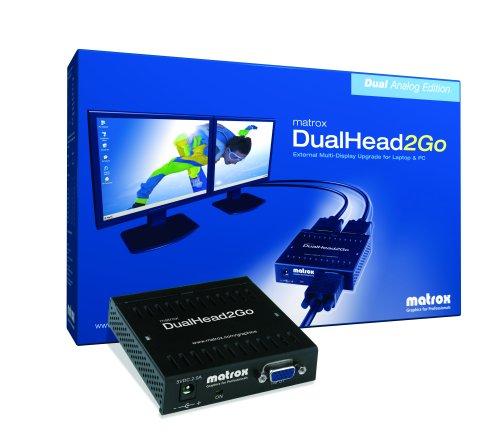
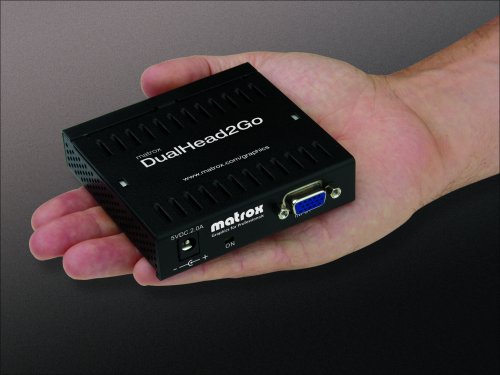
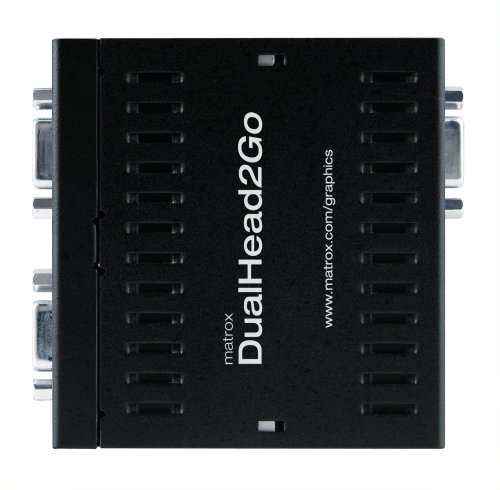
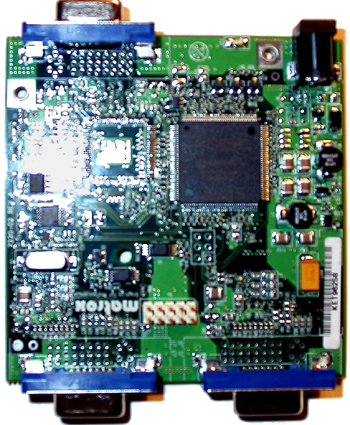
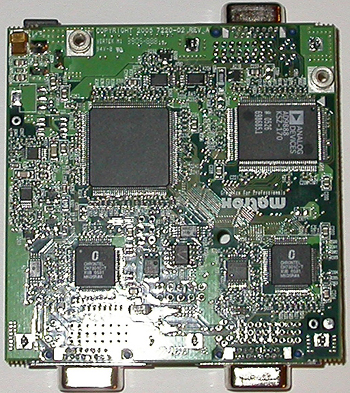
The Cyclone EP1C chips used are what drive the capabilities of the DualHead2Go. As there are no custom Matrox ASICs on the board, we can conclude that the one or both of the FPGAs handle taking the output of the AD9888, splitting the image into two (or clone the image depending on the resolution and PowerDesk settings), and then sending the resulting data along to the Chrontel CH7301C-T display controllers. These devices also likely manage the rest of the board and use the DDC (Display Data Channel) to report the DualHead2Go's EDID (extended display identification data) to the display device.
The CH7301C is a single link DVI transmitter, which supports analog output over three 10-bit DACs for analog RGB displays. This suggests that a digital version of the DualHead2Go wouldn't be that difficult to implement. This part of the design could also be reused if Matrox were to develop a version of the DualHead2Go that supports up to 3200x1200 (or two 1600x1200 displays). Of course, a device such as this would require a dual-link DVI input and a beefier digitizer than the AD9888. The FPGAs may also need an upgrade for a higher resolution version (it would entail more I/O and might require something larger), but the functionality of the device should be easily extendable, so added design time would be minimal.










23 Comments
View All Comments
ViperV990 - Friday, November 25, 2005 - link
I'd definitely love to see a 1-to-3 solution for some slick triple-head gaming.Donegrim - Friday, November 25, 2005 - link
Or connect one to monitor out 1, and 1 more to monitor out 2...and have 4 monitors...mmmm...salivating. Although I suppose triple head would be better for getting round the image split down the middle thing.Or 4 projectors
4 dual link DVI projectors
mmmmmmmm...mortgage required....
Calin - Friday, November 25, 2005 - link
And some of them don't have two "good" video outputs - and in some cases upgrading the video card is the more expensive solution. This would be well for engineering workstations or similar machines that have single outputs and video cards costing hunderds of dollars.Matrox is used to have limited success (unfortunately), so I hope they will win with this.